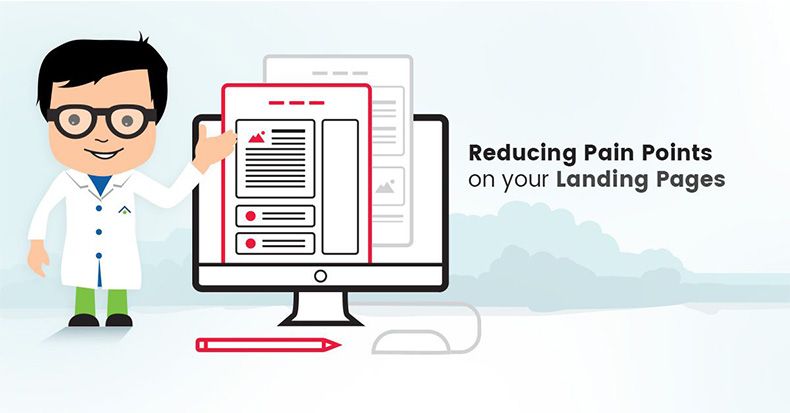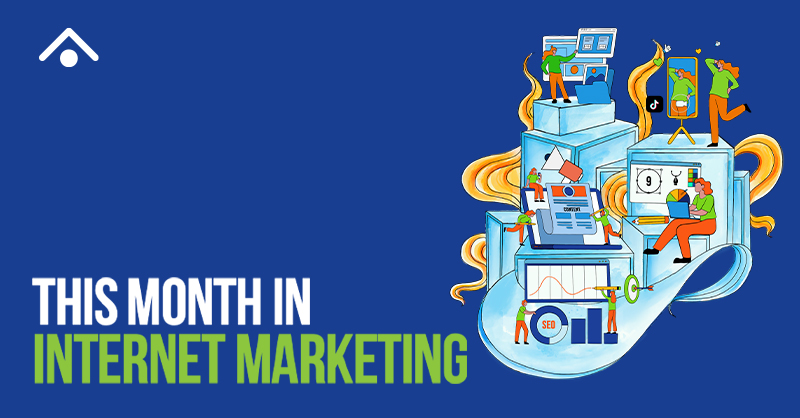A customer's online experience with your company is a journey that needs to be consistent. From the first point of contact to the last purchase, inquiry or call, customers expect to navigate the online process with ease and transparency.
A critical checkpoint in the online journey is the landing page. The customer has officially entered ‘your territory’ and you have full control over what they see and what they interact with. Hopefully, the user who has landed on your page is an interested buyer and you just need to make the rest of the process as straight-forward, informative and pain free as possible.
What are some landing page (website) pain points that you can address?
Slow Page Speed
Customers are impatient. When they reach your landing page, they expect the website to be there ... immediately. The longer it takes for your page to load, the higher increase in page abandonment you’ll experience.
To make sure you are not losing potential customers because of poor page load times, try and make sure your landing page is loading in under 2 seconds (kissmetrics).
How can you reduce page load times?
There are many reasons why your page speed could be lacking. Make sure to do a full page speed analysis and identify which factors are noticeably increasing load times.
Two effective tools for testing your page load times are Pingdom Website Speed Test and Google’s PageSpeed Insights.
Some common fixes to speed up your page load times are:
1. Optimize Images: Make sure to compress images on the page as much as possible (without losing too much quality). A large amount of images that are not optimized are a common enemy against site speed.
2. Reduce the number of HTTP requests: HTTP Requests are the number of times the visitor's web browser has to ask the web server for the file. Every time there is a piece of text or an image on the webpage, the browser has to communicate with the server to send that file over. The more times it has to do this, the longer it will take your website to load. Try and reduce the number of requests by eliminating unnecessary files and combining some files that will not affect the way the page loads.
3. Reduce redirects: Redirects are implemented to automatically take a visitors from one location on your website to another. Many redirects are necessary and can be your friends, too many redirects can slow down your website. Make sure to clean up any unnecessary redirects.
4. Leverage browsing cache: This is essentially making sure the visitors browser ‘remembers’ certain aspects of your website. Repeat visitors and the pages after the initial page will load more quickly because some parts of the page are ‘saved’ by the visitors browser (it does not have to load the entire page again).
Poor Form Field Functionality/Structure
The structure and functionality of landing page contact forms is something that can be easily overlooked. It is important that you review your contact forms to make sure they are as pain free as possible for your potential customer.
Things to review on your contact forms:
- Number of form fields: Make sure you have enough fields that it's easy for you to follow up with a lead, but not so many that it may prevent them from completing the form.
- Number of ‘necessary’ fields: Only make fields ‘necessary’ if they are actually necessary. Potential customers don’t want to spend time filling out fields they don’t feel are relevant to them. In addition, some users don’t feel comfortable revealing certain information before talking a representative - so don’t make them unless it is truly necessary.
- Form field validation: Add form field validation so the customer is aware if they completed the form correctly, and if they didn’t, which fields need to be corrected.
- Number pads on mobile devices: On mobile devices, have the number pad pop-up for fields where numbers are only necessary (phone number).
Non-Responsive Landing Page
A responsive landing page and website has transitioned from a point of differentiation to a point of a necessity. If your website is not compatible across all devices, then you are presenting your customer with a huge pain point in the online experience.
In 2014, mobile surpassed desktop as the number #1 device for online usage (Smart Insights). This stat speaks for itself, more and more users are browsing the internet using their phone and tablet. If you have not already, your website needs to become device responsive.
What are some other reasons you need a responsive website?
- Google rewards website responsiveness and punishes for poor user experience. How responsive your website is across mobile-devices is now a factor in SEO rankings. So if you want your website to rank high in Google, make sure it works across all devices.
- User experience can be directly related to how responsive a website is. If the customer enters the landing page and has difficulty using the interface or the page does not work properly, users are more likely to leave the page.
- Responsive websites will adapt to future devices. This is less work and money for you since your website will automatically change to whatever new phone comes out next!
The other method of making sure your website is compatible with all devices is to make a device specific webpage under a subdomain. This method is also effective, however it can be more work for you in the long run. Not only will you have to create a subdomain for each website variation you make, you will also have to make a new variation every time a new device is released.
In the end, a website that works well on all devices is essential to customer funnel. Customers expect an user experience that allows them to navigate and interact with ease. Providing them with that experience can be the difference between a lead for you business and a lead for your competitor.






